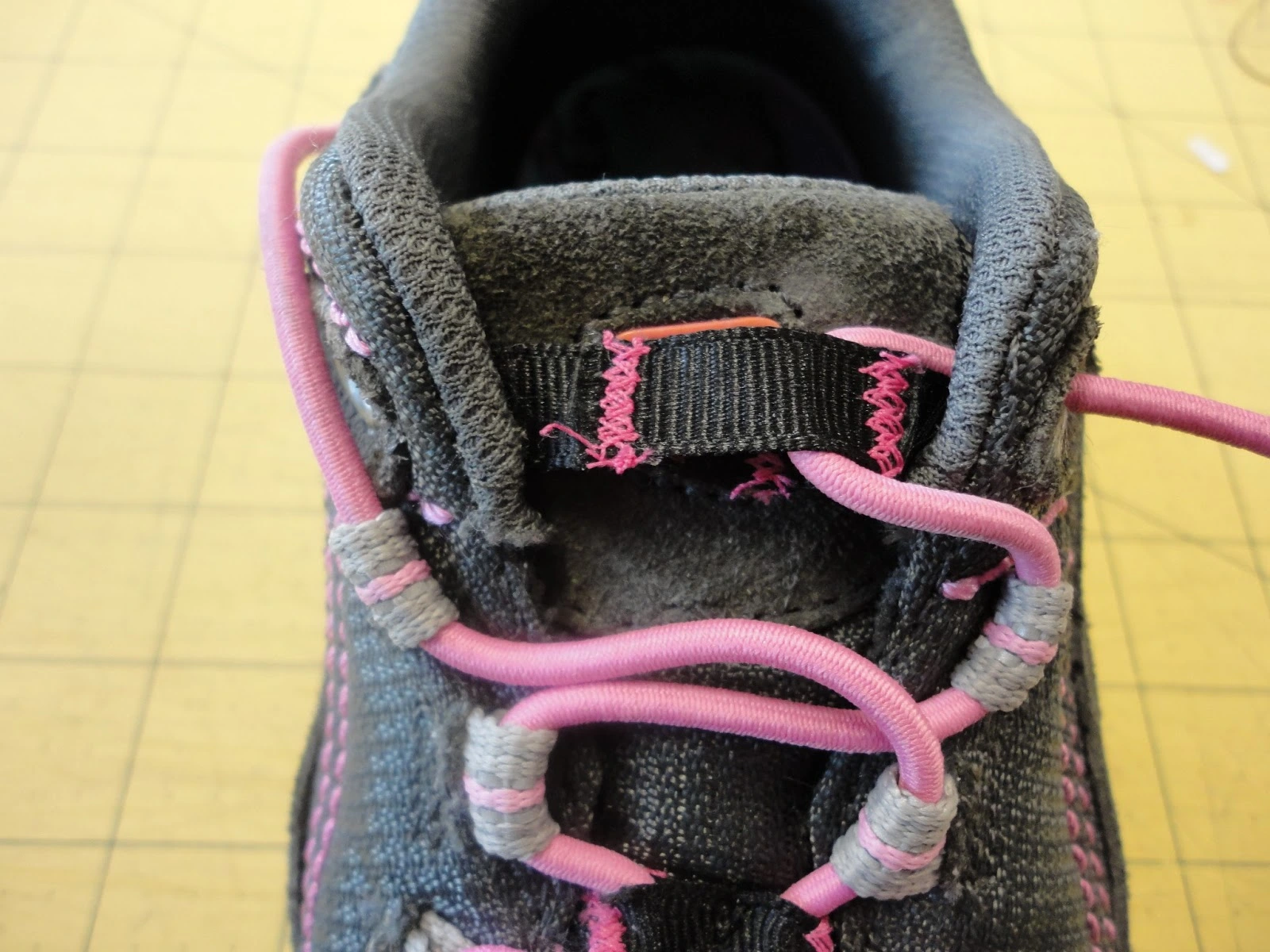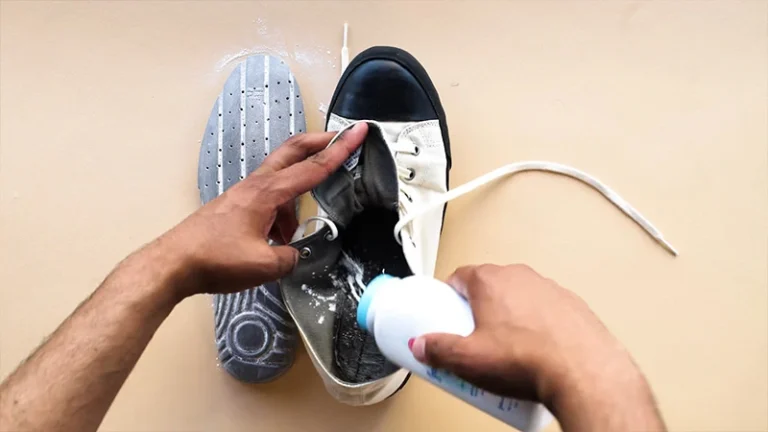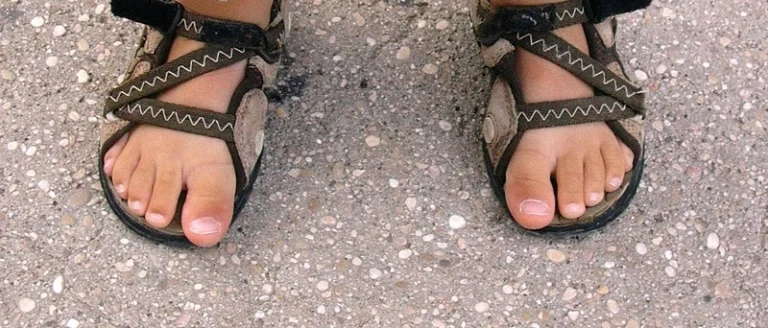How To Keep Shoe Tongue In Place? Best Method
Having a properly positioned shoe tongue is essential for a comfortable and secure fit. However, many people struggle with the issue of their shoe tongues slipping or moving during wear, which can be both annoying and uncomfortable. If you find yourself constantly readjusting your shoe tongue, fret not! This article will provide you with simple and effective solutions to keep your shoe tongue in place, allowing you to enjoy your footwear without any distractions.
In this article, we will explore various techniques and products that can help you maintain the position of your shoe tongue. From traditional lacing methods to innovative accessories, we will cover a range of solutions suitable for different shoe types and personal preferences. Whether you’re an athlete looking for stability during intense workouts or someone who simply wants a hassle-free shoe-wearing experience, we’ve got you covered.
Understanding the Problem
Before we dive into the solutions, it’s important to understand why shoe tongues tend to slip or move. By identifying the causes, we can better address the issue and find effective solutions. Here are some common reasons behind shoe tongue displacement:
Poorly designed shoe tongues
Some shoe tongues may be too thin or made of slippery materials, making them prone to shifting or sliding around.
Incorrect lacing technique
Improper lacing can contribute to tongue movement. If the laces are too loose or unevenly tightened, the tongue may not stay in place.
Foot movement and friction
During walking or physical activities, the movement of your feet can cause the shoe tongue to shift. Friction between the tongue and your foot can also contribute to displacement.
Shoe size and fit
Wearing shoes that are too loose or too tight can affect the position of the tongue. If the shoe doesn’t fit properly, the tongue may move around more easily.
Identifying the type of movement your shoe tongue experiences can help determine the most suitable solution. Here are two common types:
Vertical movement
The tongue slips down or bunches up towards the toes, causing discomfort and affecting the fit of the shoe.
Horizontal movement
The tongue shifts from side to side, leading to an uneven fit and potential discomfort.
By understanding the causes and types of shoe tongue displacement, you’ll be better equipped to choose the right solution for your specific situation. In the following sections, we will explore various techniques and products that can help keep your shoe tongue in place, ensuring a comfortable and secure fit.
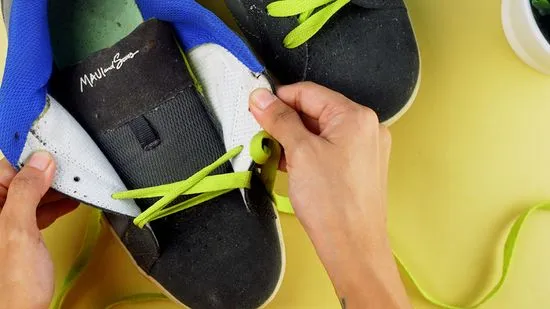
Traditional Lacing Techniques
One of the simplest and most effective ways to keep your shoe tongue in place is by using traditional lacing techniques. Properly lacing your shoes can provide a secure fit and prevent the tongue from slipping or moving. Here are a few traditional lacing methods you can try:
Basic Lacing Method
Over-Under Lacing Technique
Gap Lacing Method
These traditional lacing techniques can help distribute the tension evenly across the shoe, keeping the tongue in place. Experiment with different methods to find the one that works best for you and your shoe type. Remember to adjust the tightness of the laces to achieve a secure yet comfortable fit.
Tongue Pads or Cushions
Another effective solution to keep your shoe tongue in place is by using tongue pads or cushions. These are soft, padded inserts that can be placed underneath the tongue of your shoe to provide extra support and prevent slippage. Here’s how you can use tongue pads or cushions:
Choose the right tongue pad
Tongue pads come in various sizes and thicknesses. Select a pad that fits comfortably underneath the tongue of your shoe without causing any discomfort or tightness.
Clean the shoe tongue area
Before applying the tongue pad, make sure the area underneath the tongue is clean and free from any dirt or debris. This will ensure a secure attachment.
Position the tongue pad
Peel off the adhesive backing of the tongue pad and carefully place it underneath the tongue of your shoe. Make sure it is centered and covers the area where the tongue tends to slip or move.
Press firmly
Once the tongue pad is in position, press it firmly against the shoe tongue to ensure a strong bond. Smooth out any wrinkles or air bubbles for a secure attachment.
Test the fit
Put on your shoes and check if the tongue pad provides the desired support and prevents the tongue from slipping. Adjust the positioning or thickness of the pad if needed.
Tongue pads or cushions can provide additional padding and grip, helping to keep the tongue in place throughout the day. They are particularly useful for shoes with thin or slippery tongues. Remember to replace the tongue pads periodically, as they may lose their effectiveness over time.
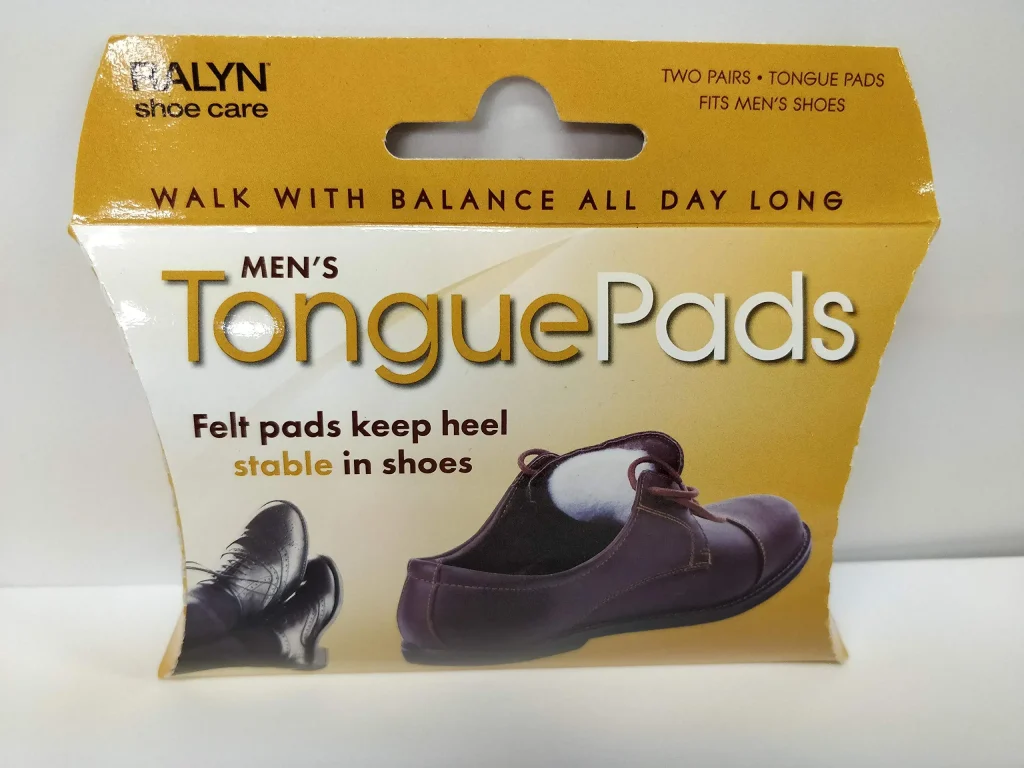
Tongue Stays or Straps
Tongue stays or straps are specialized accessories designed to keep the shoe tongue in place. They provide additional support and prevent the tongue from slipping or moving during wear. Here’s how you can use tongue stays or straps:
Choose the right tongue stay or strap
Tongue stays or straps come in various designs and materials. Look for one that is compatible with your shoe type and provides the desired level of support.
Position the tongue stay or strap
Place the tongue stay or strap on top of the shoe tongue, near the base where it meets the shoe. Make sure it is centered and aligned with the tongue.
Attach the tongue stay or strap
Depending on the design, tongue stays or straps may have adhesive backing, Velcro fasteners, or hooks. Follow the instructions provided with the accessory to securely attach it to the shoe tongue.
Adjust the tension
Once the tongue stay or strap is attached, adjust the tension to your preference. It should provide enough support to keep the tongue in place without causing discomfort or tightness.
Test the fit
Put on your shoes and walk around to ensure that the tongue stay or strap effectively prevents the tongue from slipping or moving. Make any necessary adjustments to the positioning or tension for optimal comfort.
Tongue stays or straps are particularly useful for shoes with loose or flimsy tongues. They provide an extra layer of support and stability, ensuring that the tongue stays in its proper position throughout the day. Experiment with different tongue stay or strap designs to find the one that works best for your shoe type and personal preference.
Elastic Bands or Clips
Using elastic bands or clips is another effective method to keep your shoe tongue in place. These accessories provide additional support and help secure the tongue, preventing it from slipping or moving during wear. Here’s how you can use elastic bands or clips:
Choose the right elastic band or clip
Look for elastic bands or clips specifically designed for securing shoe tongues. They should be adjustable and provide a snug fit without causing discomfort.
Position the elastic band or clip
Place the elastic band or clip over the shoe tongue, near the base where it meets the shoe. Ensure that it is centered and aligned with the tongue.
Adjust the tension
If using an elastic band, adjust the tension by stretching it slightly. It should provide enough support to keep the tongue in place without being too tight or restrictive. If using a clip, adjust it to the desired tightness.
Secure the elastic band or clip
Fasten the elastic band by looping it around the sides or through the eyelets of the shoe. If using a clip, attach it securely to the sides of the shoe tongue.
Test the fit
Put on your shoes and walk around to ensure that the elastic band or clip effectively keeps the tongue in place. Make any necessary adjustments to the tension or positioning for optimal comfort.
Elastic bands or clips are versatile solutions that can be used with various shoe types. They provide an extra layer of support and stability, ensuring that the tongue stays in its proper position throughout the day. Experiment with different elastic bands or clips to find the ones that work best for your shoe type and personal preference.
Shoe Tongue Glue or Adhesive
If you’re looking for a more permanent solution to keep your shoe tongue in place, using shoe tongue glue or adhesive can be an effective option. These products provide a strong bond between the tongue and the shoe, preventing any movement or slippage. Here’s how you can use shoe tongue glue or adhesive:
Clean the shoe tongue area
Before applying the glue or adhesive, ensure that the area underneath the tongue is clean and free from any dirt or debris. Use a damp cloth or mild soap to gently clean the surface and let it dry completely.
Apply the glue or adhesive
Follow the instructions provided with the shoe tongue glue or adhesive. Apply a thin, even layer of the product to the underside of the tongue or the corresponding area inside the shoe.
Press the tongue firmly
After applying the glue or adhesive, press the tongue firmly against the shoe, ensuring a strong bond. Hold it in place for the recommended duration specified by the product instructions to allow the glue or adhesive to set properly.
Let it dry
Allow the glue or adhesive to dry completely before wearing the shoes. This may take a few hours or as per the instructions provided with the product. Avoid putting excessive pressure on the tongue during the drying process.
Test the fit
Once the glue or adhesive has dried, put on your shoes and check if the tongue remains securely in place. Ensure that it doesn’t cause any discomfort or restrict movement. If needed, make any necessary adjustments to the positioning or fit.
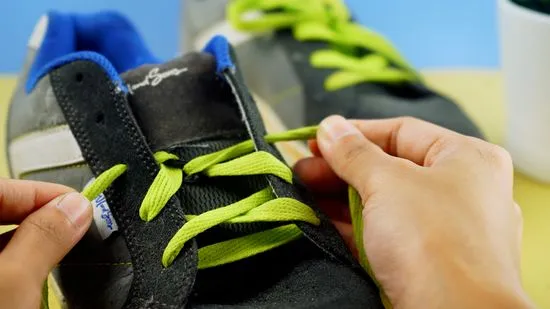
Shoe tongue glue or adhesive provides a long-lasting solution to keep the tongue in place. However, it’s important to note that this method may not be reversible, and removing the glue or adhesive may damage the shoe or leave residue. Consider this option if you are certain that you want a permanent fix for your shoe tongue slippage issue.
Related To: Best Men’s Tennis Shoes For Flat Feet
Related To: Best Women’s Tennis Shoes For Flat Feet
Conclusion
there are several effective methods to keep the shoe tongue in place. One option is to use tongue pads or cushions, which are adhesive strips that can be placed on the underside of the tongue to prevent it from sliding around. Another approach is to use lace anchors or tongue stabilizers, which are small devices that attach to the laces and hold the tongue securely in place. Additionally, double knotting the shoelaces can help keep the tongue from shifting during activities. Lastly, some shoes come with built-in features like elastic straps or loops that can be used to secure the tongue.

